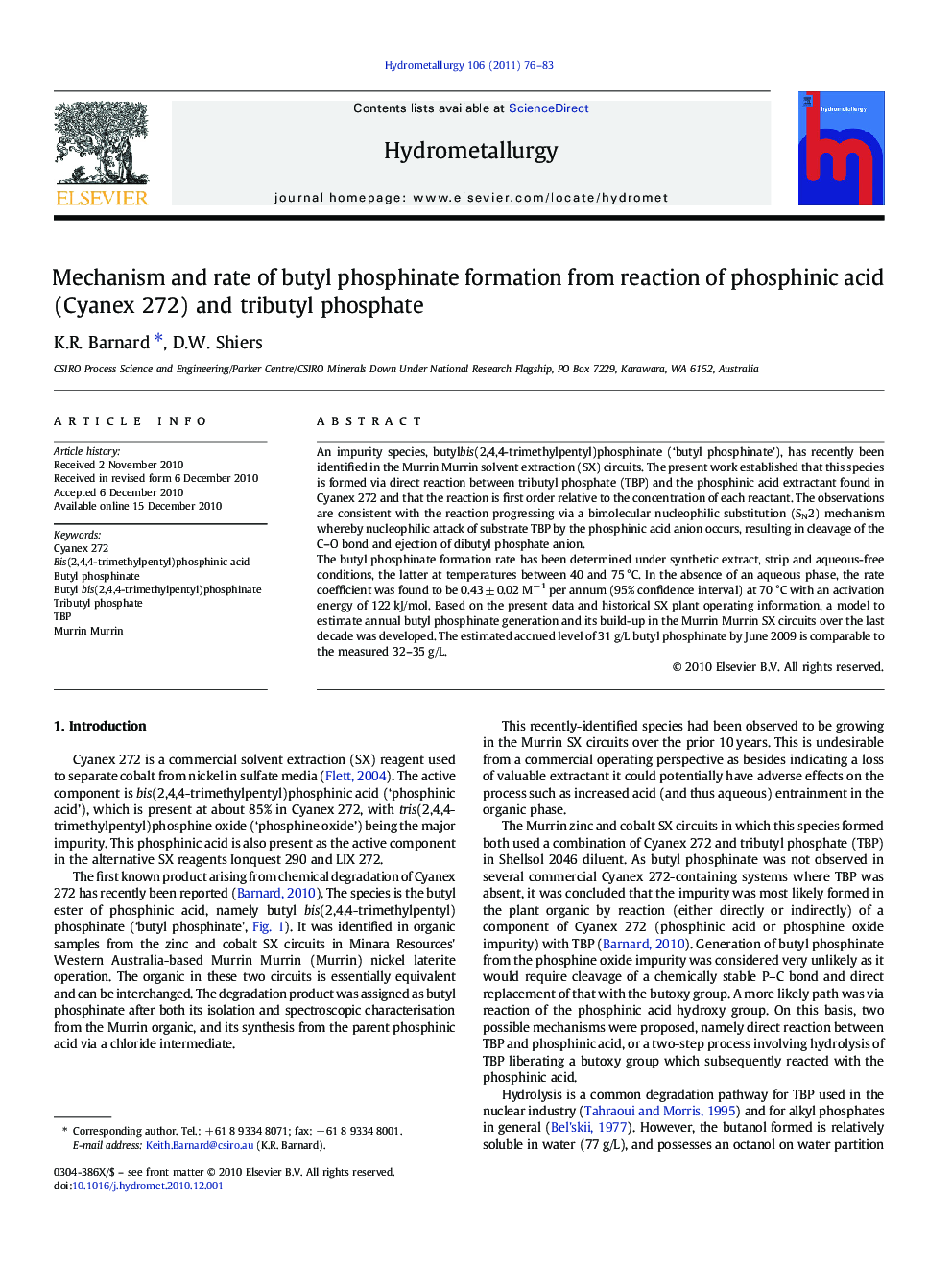| کد مقاله | کد نشریه | سال انتشار | مقاله انگلیسی | نسخه تمام متن |
|---|---|---|---|---|
| 212861 | 462070 | 2011 | 8 صفحه PDF | دانلود رایگان |

An impurity species, butylbis(2,4,4-trimethylpentyl)phosphinate (‘butyl phosphinate’), has recently been identified in the Murrin Murrin solvent extraction (SX) circuits. The present work established that this species is formed via direct reaction between tributyl phosphate (TBP) and the phosphinic acid extractant found in Cyanex 272 and that the reaction is first order relative to the concentration of each reactant. The observations are consistent with the reaction progressing via a bimolecular nucleophilic substitution (SN2) mechanism whereby nucleophilic attack of substrate TBP by the phosphinic acid anion occurs, resulting in cleavage of the C–O bond and ejection of dibutyl phosphate anion.The butyl phosphinate formation rate has been determined under synthetic extract, strip and aqueous-free conditions, the latter at temperatures between 40 and 75 °C. In the absence of an aqueous phase, the rate coefficient was found to be 0.43 ± 0.02 M−1 per annum (95% confidence interval) at 70 °C with an activation energy of 122 kJ/mol. Based on the present data and historical SX plant operating information, a model to estimate annual butyl phosphinate generation and its build-up in the Murrin Murrin SX circuits over the last decade was developed. The estimated accrued level of 31 g/L butyl phosphinate by June 2009 is comparable to the measured 32–35 g/L.
Research Highlights
► Butyl phosphinate forms via direct reaction of phosphinic acid and TBP.
► A bimolecular nucleophilic substitution (SN2) mechanism is proposed.
► Butyl phosphinate accrual at Murrin over the past decade has been modelled.
Journal: Hydrometallurgy - Volume 106, Issues 1–2, February 2011, Pages 76–83